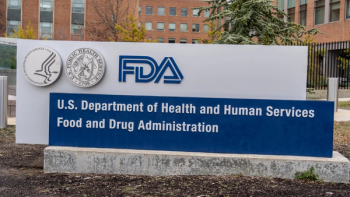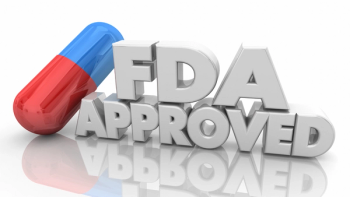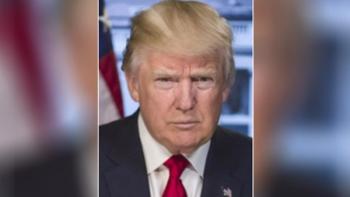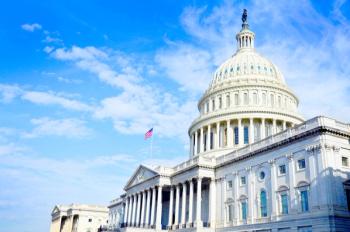Drug shortages in the United States hit an all-time high last year. President Trump has signaled pharmaceutical tariffs as a way to incentivize American manufacturing, saying “the pharmaceutical companies are going to come roaring back.”1 But tariffs alone are unlikely to catalyze U.S. production at scale, especially for generic drugs, which account for 90% of American prescriptions. U.S. manufacturing also won’t singlehandedly secure shortage-prone drug supply chains. To ensure a reliable supply of medicines, the United States must enable integrated, agile, and diversified manufacturing ecosystems––including across borders.
Key Takeaways
- To ensure a reliable supply of medicines, the United States must enable integrated, agile, and diversified manufacturing ecosystems––including across borders.
- Globalization of pharmaceutical supply chains has facilitated access to cheaper medicines.
- To ensure reliable medicine supply, the United States needs to bolster U.S. manufacturing, while also incentivizing integrated, agile, and diversified supply chains within and across borders.
What impact will tariffs have on the pharmaceutical industry?
Globalization of pharmaceutical supply chains has facilitated access to cheaper medicines, but at a cost. Tax and capital incentives, low-cost labor, and lower regulatory standards led pharmaceutical companies to shift away from vertically integrated production models toward outsourced third-party manufacturers. Factories in the United States shuttered as production concentrated in a handful of countries. U.S. Pharmacopia estimates2 that, in 2023, more than 80% of active pharmaceutical ingredients were made outside the United States, mostly in China and India. The problem is even more acute for specific medicines: China controls roughly 90%3 of the global supply of inputs needed to make antibiotics. A single natural disaster or geopolitical conflagration could upend the system, threatening the lives of patients globally.
A reliable supply of critical medicines and medical devices is essential to American public health security. Producers must balance supply chain efficiencies with resilience measures that ensure reliable supply even in the event of unforeseen disruptions. The COVID-19 pandemic exposed the risks of globalized supply chains: if the United States had maintained even a baseline domestic capacity to manufacture personal protective equipment before the pandemic, production could have ramped up much more quickly in 2020 to mitigate shortages.
Tariffs are an important strategic tool to target specific unfair trade practices and nurture domestic industries critical to national security. Certain countries such as China have long flouted global trade rules, heavily subsidizing local industry and driving down global prices for key commodities. Such industrial overcapacity pushes suppliers elsewhere to exit the market, further concentrating production.
The value of tariffs, however, lies in their targeted application. Broad-based tariffs would harm U.S. manufacturers by driving up the costs for imported ingredients, intermediates, excipients, and packaging. Across-the-board tariffs would also spark retaliatory measures limiting export markets for U.S. products, while doing little4 to incentivize diversification away from China. Generic drug producers would struggle to absorb tariff costs. With thin margins and limited ability to pass along costs, generic manufacturers could be forced to exit5 the U.S. market, triggering drug shortages. Even if tariffs drove domestic manufacturing expansion, capacity would not grow at the speed or scale needed to meet demand. This is the challenge facing the administration’s Section 232 investigation6 into pharmaceuticals.
Tariffs alone are also not enough to build a thriving U.S. medical products industry. Pharmaceutical and device manufacturing is capital-intensive. Manufacturers must finance significant upfront costs, and the return on investment is unlikely to be at the level currently expected by private investors. Companies need a favorable tax regime. Regulatory uncertainty, particularly FDA approval processes for advanced manufacturing technologies, creates additional challenges. Manufacturing expansion also takes time––Eli Lilly’s newly announced U.S. manufacturing plants won’t begin producing drugs for patients for five years.7
More importantly, "Made in America" does not unilaterally yield reliable supply chains. For example, most baby formula is made in the United States. Production is concentrated among three companies. When one manufacturer halted production in February 2022 due to quality issues, Americans faced unprecedented shortages, jeopardizing infant health. Yet, the infant formula supply chain remains8 highly concentrated, leaving American babies just one factory shutdown away from another shortage.
To ensure reliable medicine supply, the United States needs to bolster U.S. manufacturing, while also incentivizing integrated, agile, and diversified supply chains within and across borders. Deliberate, sector-specific trade agreements with like-minded countries that promote regulatory harmonization would foster more balanced supply chain ecosystems and expand market access for U.S. manufacturers. Sector-specific agreements could incorporate incentives to promote localized manufacturing of upstream materials or intermediate components with country partners, further reducing dependencies on third-country sources.
U.S. legislators have made an initial foray into this space: the Medical Supply Chain Resiliency Act9 introduced on March 12 by Sens. Thom Tillis (R-NC), Chris Coons (D-DE), John Cornyn (R-TX), and Michael Bennet (D-CO) would authorize the president to enter into trade agreements for the reciprocal elimination of duties or other import restrictions with respect to medical goods. The bill is an encouraging example of the trade strategies needed to diversify supply chains for pharmaceuticals and medical devices and incentivize U.S. investment by expanding export markets for American manufacturers.
The bottom line: it’s time for a proactive strategy that promotes U.S. pharmaceutical manufacturing as a crucial pillar within a resilient and diversified supply chain ecosystem.
Dr. Monica Gorman was special assistant to the president for manufacturing & industrial policy and co-chair of the White House Supply Chain Disruptions Task Force from 2022-25. She was also deputy assistant secretary of commerce for manufacturing from 2021-22. She is currently a managing director with Crowell Global Advisors in Washington, D.C.
Sources
- President Trump Delivers Remarks on New Tariffs. C-Span. April 2, 2025. https://www.c-span.org/program/white-house-event/president-trump-delivers-remarks-on-new-tariffs/658000
- https://qualitymatters.usp.org/global-manufacturing-capacity-active-pharmaceutical-ingredients-remains-concentrated
- Testimony of Rosemary Gibson. SBC. March 12, 2020. https://www.sbc.senate.gov/public/_cache/files/1/c/1c39a1bc-f22c-4178-951e-29b92dcb2182/3AD9C94FB267763A83913E2303A6A772.gibson-testimony.pdf
- Comments on Section 232: The national security investigation of imports of pharmaceuticals. Brookings. May 8, 2025. https://www.brookings.edu/articles/comments-on-section-232-the-national-security-investigation-of-imports-of-pharmaceuticals/
- https://www.brookings.edu/wp-content/uploads/2025/05/Wosinska-Section-232-Comment-Letter-FINAL.pdf
- Notice of Request for Public Comments on Section 232 National Security Investigation of Imports of Pharmaceuticals and Pharmaceutical Ingredients. Federal Register. April 16, 2025. https://www.federalregister.gov/documents/2025/04/16/2025-06587/notice-of-request-for-public-comments-on-section-232-national-security-investigation-of-imports-of
- Lilly plans to more than double U.S. manufacturing investment since 2020 exceeding $50 billion. Lilly. February 26, 2025. https://investor.lilly.com/news-releases/news-release-details/lilly-plans-more-double-us-manufacturing-investment-2020
- Challenges in Supply, Market Competition, and Regulation of Infant Formula in the United States. National Academies. https://nap.nationalacademies.org/catalog/27765/challenges-in-supply-market-competition-and-regulation-of-infant-formula-in-the-united-states
- https://www.tillis.senate.gov/services/files/9FCE603A-3E90-4773-A974-3359D76D61F5





